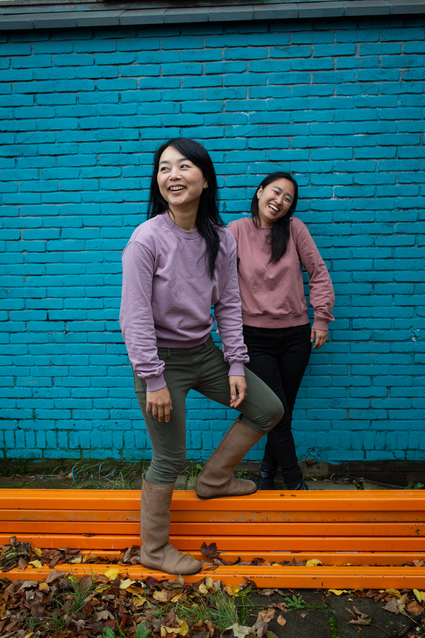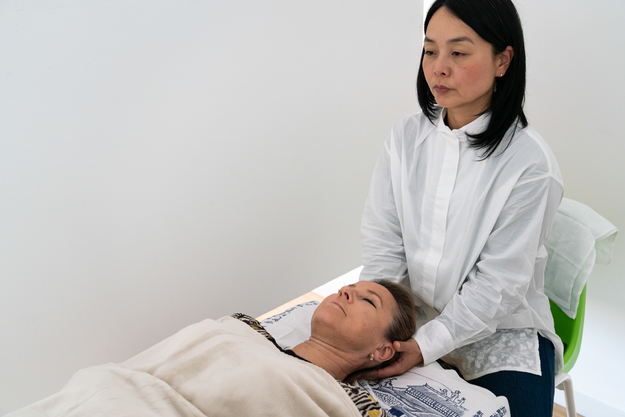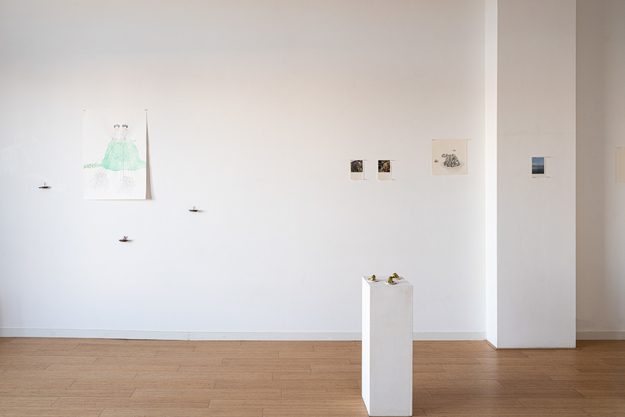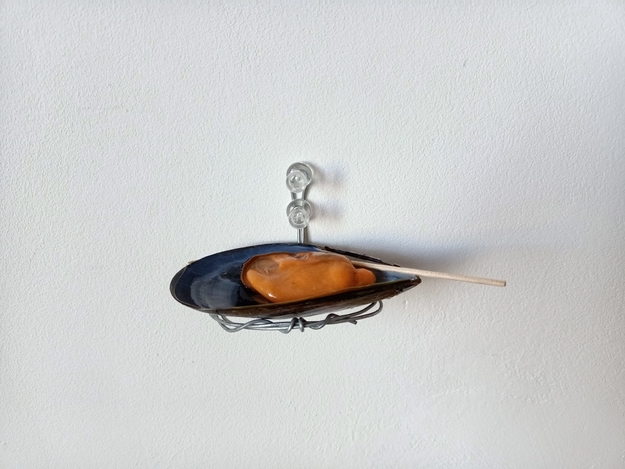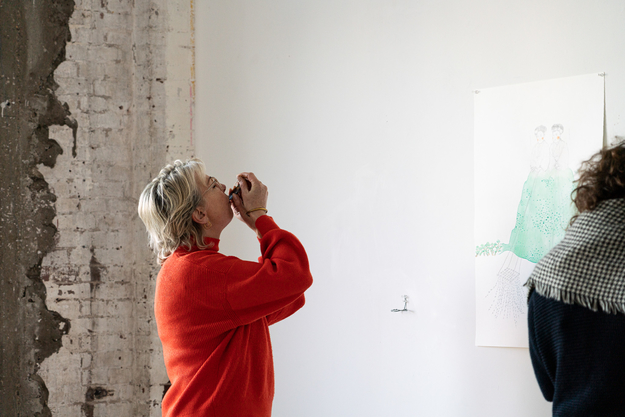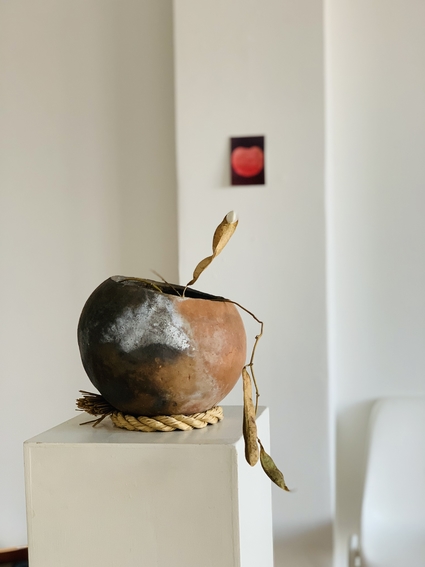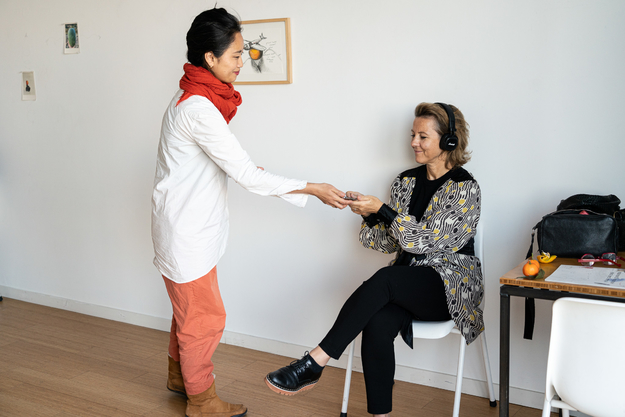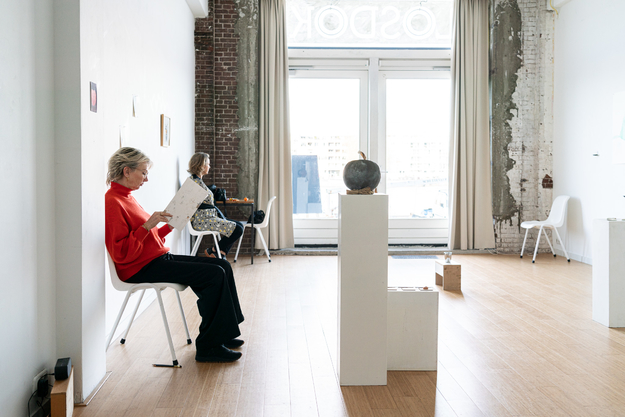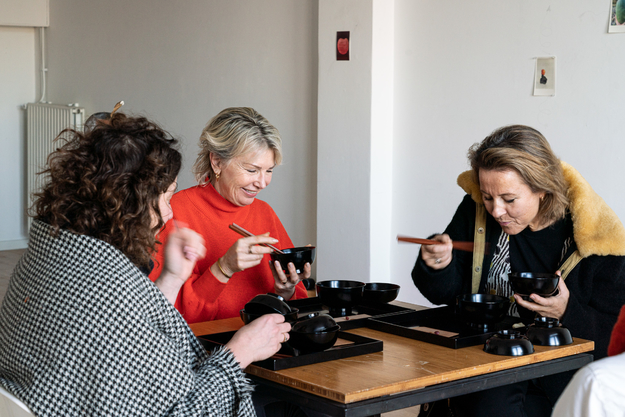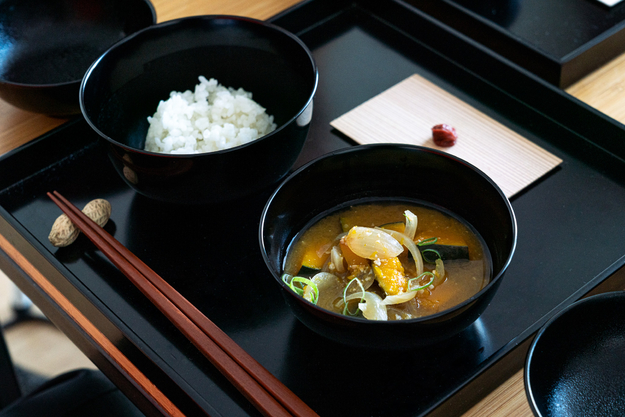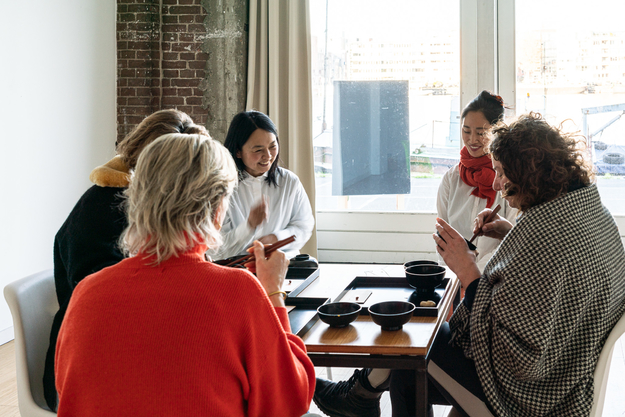Project description
EatArt experience invites people to reconnect with themselves, others, and their environment, through using their five senses. In a serene setting, a limited number of three participants are invited to take part in a multi-sensory journey. In approximately 90 minutes, three parts unfold: the first two parts are interchangeable and will be enjoyed in silence, whereas the third part encourages interaction.
First part
Head spa experience, also known as brainstem touch. This Japanese type of physical therapy is unique in the Netherlands. The brainstem forms the foundation of the body as a whole. Through stimulating the five senses, our body’s self-healing power is being reinforced.
Second part
Food art experience. Beautiful finger food interacts with other art forms,such as delicate drawings, Edible Ikebana – a unique concept, based on Japanese flower arrangement – soothing soundscapes and stimulating scents, using Japanese essences.
Third part
The previous two personal (sensory) experiences are shared with the other participants, while enjoying small snacks and delicious drinks.
To (re)connect with the environment, each EatArt experience takes place in a carefully curated context – such as one of Mediamatic’s iconic greenhouses – while the changing seasons form the inspiration for the corresponding art, food, soundscape, head spa experience and aromatic atmosphere, using Japanese essences. The circular nature of time encourages experiment; as each season has its unique sensory spirit, so does each EatArt experience.
Following the seasons, four unique EatArt experiences are organised per calendar year as well as one additional gathering, to honour one of the Japanese micro seasons. Due to the limited capacity of three participants per EatArt experience, we will host four identical experiences for each of these five seasons, totalling at twenty EatArt experiences per calendar year.
Possible ways to expand the project
These seasonal sessions and multi-sensory experiences form a great foundation to build an EatArt community. In a carefully curated context – such as an art gallery, museum, monumental building, botanic garden, agricultural setting, or wild nature – kindred spirits are invited to (re)connect through art, food, sound, a unique head spa experience and aromatic atmosphere, using Japanese essences.
To become part of the Eat Art community, its participants can join the EatArt salon; an exclusive membership open to artists, small business owners, as well as managers and board members of large corporations.
Personal introduction
Growing up in the metropolis of Tokyo, Takako Hamano always longed for the summers she spent in rural Japan. In her current artistic practise, she is still (re)searching what her 6-year-old self was missing: the all-encompassing spirit of nature, its interconnectedness to all, and the profoundly mythical and mysterious life on Shikoku Island. In her drawings, books, and animations as well as in her soundscapes and spatial work, Takako tries to capture these profound ponderings of talking trees, laughing mountains, and being deceived by a racoon dog. Her work gives us a glimpse of this fascinating world where everything is (inter)connected.
One way of connecting the various worlds of Takako, is her direct link to Nirono village on Shikoku Island, where she initiated the sustainable project Circular Niro. EatArt Experience supports this project, enabling a connection to rural Japan.
Uno Fujisawa is an artist mainly focusing on the theme communication, as she believes that people experience the most profound joy through their connection with others. During the COVID pandemic, Uno initiated the concept To Feel ‘Life' is To Feel ‘Connection’. Which is currently further examined in her new project Edible Ikebana. Here, Uno researches the process of change; through growing vegetables herself and arranging the harvest using Japanese aesthetics, followed by preparing the vegetables and turning them into delectable dishes, to ultimately enjoy their beautiful flavours. Edible Ikebana reflects the continuously changing stages in life; from planting a small seed and nurturing its growth to admiring its full potential and consuming its crops.
The themes that are present in Uno’s recent work, such as (re)connection, life’s natural cycle and the interconnectedness with our environment, correspond with the themes of EatArt experience.
Estimated costs
To cover the artist fees, material costs, ingredients supplies, and documentation & PR costs for twenty EatArt experiences per calendar year, an estimated total of 12.000 euro will be needed.
Please note: The circular nature of the EatArt experiences as multi-sensory sessions in which we (re)connect with ourselves, others, and our environment, through following the seasons is reflected in Circular Niro; a sustainable and circular project initiated in Nirono village, Japan. To strengthen the bond between the two projects, 20 percent of EatArt experience’s revenue is immediately invested Circular Niro. So, every EatArt participant personally contributes to (re)creating local forests, rice fields and a traditional Japanese wooden house and therefore, helps restore the Japanese ecosystem as well as its cultural heritage.
